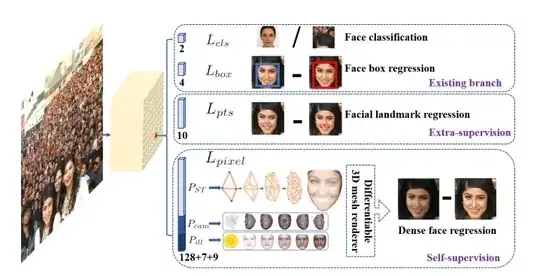I am reading Retinaface paper,
RetinaFace: Single-stage Dense Face Localisation in the Wild Jiankang Deng, Jia Guo, Yuxiang Zhou, Jinke Yu, Irene Kotsia, Stefanos Zafeiriou
link: https://arxiv.org/abs/1905.00641
One of the questions we aim at answering in this paper is whether we can push forward the current best performance (90.3% [67]) on the WIDER FACE hard test set [60] by using extra supervision signal built of five facial landmarks.
Question: here what is mean by Extra-supervision and Selfsupervision ?
Also suggest some good resources for understanding this paper better.
